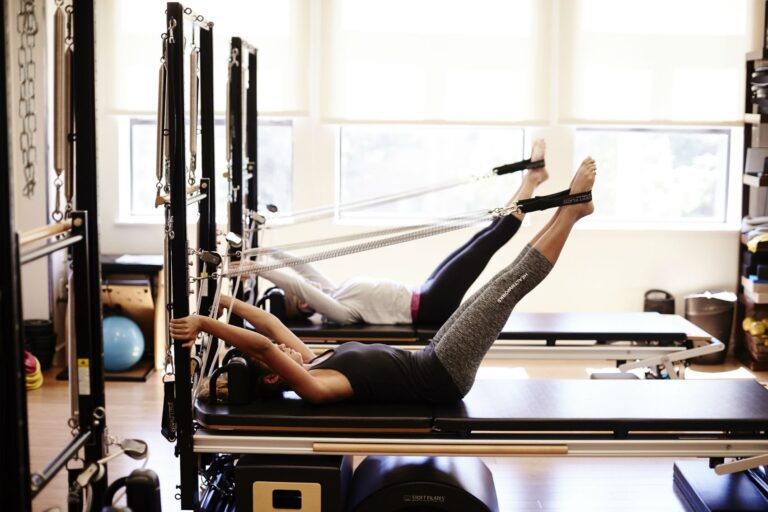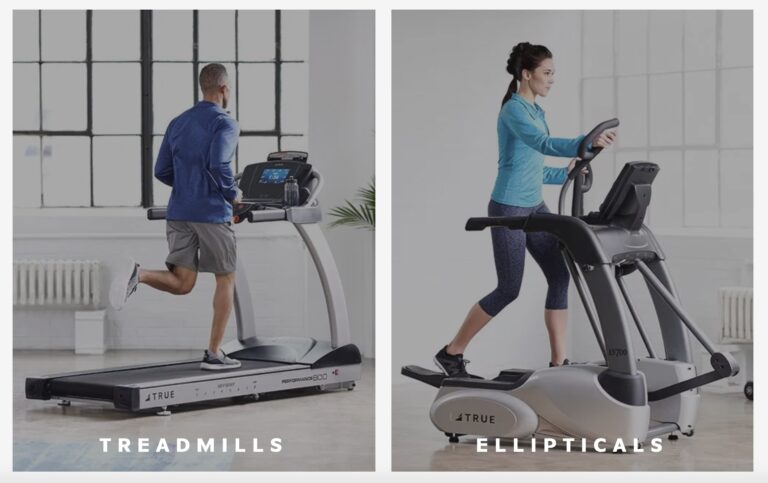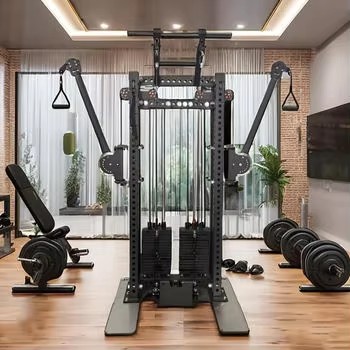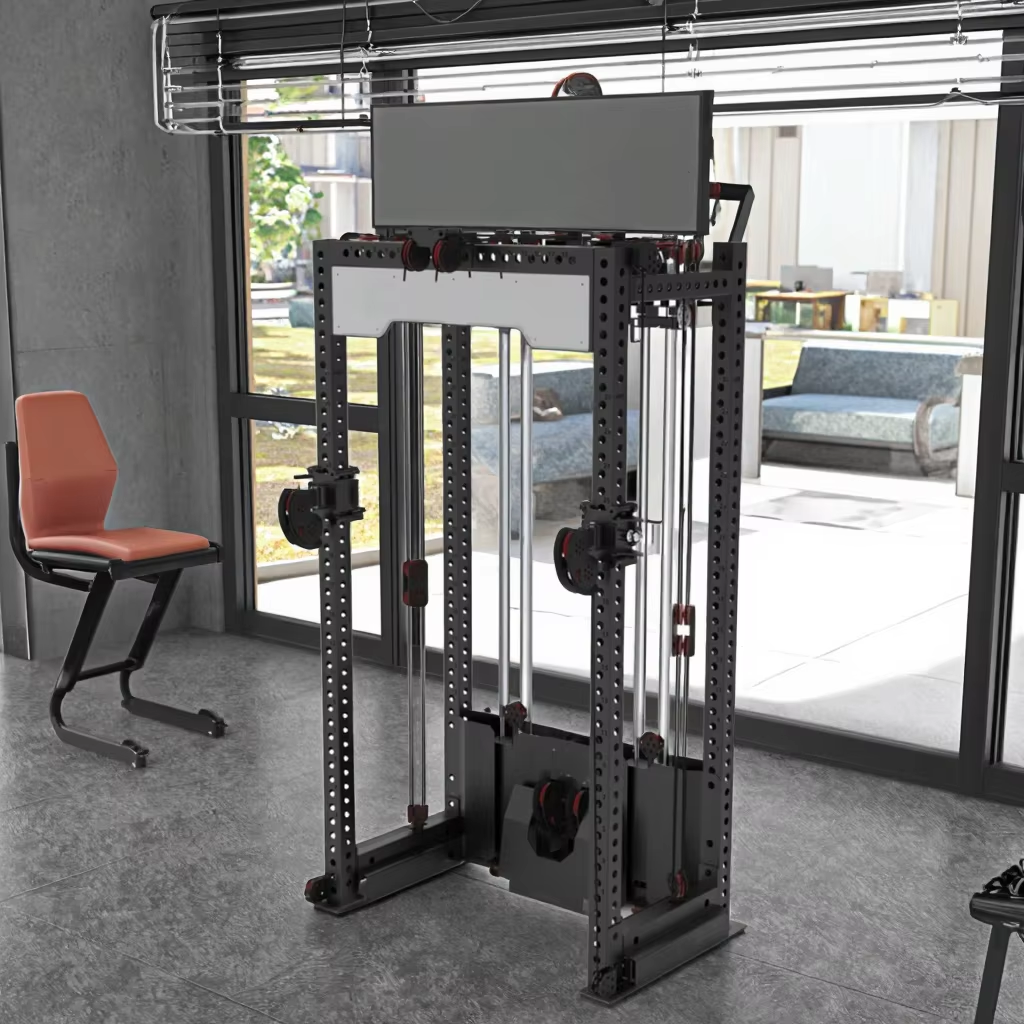Fitness Equipment Manufacturers & Wholesale

Your Comprehensive Guide to Dumbbells: From Beginner to Pro
Recently, a fan asked me, “Dumbbells look simple, but how do I choose and use them?” Today, let’s dive deep into this “all-rounder” of the fitness world. From its history to how to pick, train with, and maintain one, this article will cover everything you need to know!
What Exactly Are Dumbbells?
Simply put, a dumbbell is two weights connected by a bar, specifically designed for strength training. Its origins are quite ancient, tracing back to ancient Greece where people used stones as weights, which later evolved into metal blocks, and now to various materials and functional designs. Don’t let its rugged appearance fool you; its uses are vast. Dumbbells can build muscle and sculpt your body, aid in rehabilitation training, and even enhance athletic performance. For instance, boxers use them for explosive power, patients in rehabilitation use them for strength recovery, and general fitness enthusiasts use them to build impressive arms. They are truly a “universal fitness tool.”
The popularity of dumbbells stems from their ability to precisely target different muscle groups. For example, bicep curls work the biceps, overhead presses target the deltoids, and lateral raises develop the shoulder muscles. Moreover, the variety of exercises possible with dumbbells is immense, catering to diverse training needs. You’ll find them in gyms, rehabilitation centers, and homes, and even celebrities and athletes are keen users.
Types of Dumbbells
Dumbbells come in many classifications based on material, shape, and function. Let’s explore them one by one.
By Material
- Cast Iron Dumbbells: The most common type, offering substantial weight at an affordable price. Their surfaces are typically coated with plastic or electroplated. Plastic-dipped ones are non-slip and durable, suitable for home use, while electroplated ones look more premium but are prone to scratching, making them better for gyms. For example, a pair of 5kg plastic-dipped dumbbells from Puliai costs around $22.50 USD, offering excellent value for money.
- Rubber Dumbbells: Covered with a rubber layer, these absorb shock, reduce noise, and protect floors, making them ideal for home use. However, they might have a strong rubber odor when new, so it’s best to air them out. Decathlon offers affordable rubber dumbbells suitable for both men and women.
- Electroplated Dumbbells: Feature an electroplated metal surface, giving them a shiny, high-end appearance. They are more expensive and prone to chipping if knocked, making them suitable for fitness enthusiasts who prioritize aesthetics and quality. For instance, a 30kg set of electroplated dumbbells from Linuo comes in a colorful rod and features double-lock nuts for stability, exuding a professional feel.
By Shape
- Fixed Dumbbells: Have a set weight, such as 2.5kg or 5kg, suitable for users with stable strength levels. Their advantages include a simple structure and affordable price. For example, Qingyi brand offers reinforced dumbbells with a lifetime warranty and bonus gifts.
- Adjustable Dumbbells: Allow weight adjustment by rotating a dial or adding/removing weight plates, essentially replacing multiple fixed dumbbells with one piece of equipment. The Jingdong Jingzao smart counting model, for instance, is adjustable from 30-50kg and can even record repetitions, making it particularly suited for advanced users.
- Kettlebells: Shaped like a kettle, these are primarily used for full-body workouts such as kettlebell swings and snatches, enhancing explosive power and core stability. The Jianxingshi resistance arm trainer, with 12 lbs of adjustable resistance and smart counting, is highly effective for improving punching speed and power.
- Hex Dumbbells: Have hexagonal ends to prevent rolling, making them suitable for exercises like squats and deadlifts. The Doddes electroplated dumbbell set, with an extended connector and weighing 15kg per pair, is perfect for home training.
By Function
- Standard Dumbbells: The most basic type, suitable for various strength training exercises.
- Heavy Duty Dumbbells: Larger in weight, generally 50kg or more, suitable for professionals challenging their limits. For example, the Haoying 100kg “freak” version is made from imported steel, boasting extreme hardness.
- Rehabilitation Dumbbells: Lighter in weight, typically 0.5-2kg, suitable for post-operative recovery or exercise for the elderly. Theraband’s progressive resistance bands offer a safe and flexible option.
How Are Dumbbells Made?
Despite their small size, the production of dumbbells is quite intricate! Take cast iron dumbbells, for example. They are made from high-strength cast iron, undergoing multiple processes such as high-temperature melting, pouring into molds, cooling, shaping, grinding, and polishing to ensure precise weight and a smooth surface. Rubber dumbbells are even more complex, requiring rubber granules to be heated and melted, injected into molds, and then vulcanized to form a durable rubber layer. Adjustable dumbbells require precise mechanical structures. For instance, Bowflex dumbbells have internal gears and weight plates, with weight controlled by an adjustment rod, demanding higher production precision.
Quality control is crucial during production. Cast iron dumbbells, for example, undergo weight testing to ensure that the weight deviation of each pair does not exceed 5%. Rubber dumbbells undergo abrasion testing to simulate tens of thousands of uses and check for rubber layer detachment. Adjustable dumbbells undergo adjustment smoothness testing to ensure that dials or weight plates switch freely. Some high-end brands also include safety locks to prevent weight plates from falling off and causing injury during exercise.
How to Use Dumbbells Effectively
Three Core Elements: Stability, Slowness, Control
- Stability: Maintain a stable body throughout the exercise, avoiding swaying. For example, during squats, plant your feet firmly and engage your core to prevent using momentum.
- Slowness: Contract your muscles slowly during the concentric phase and control the speed during the eccentric phase, avoiding momentum. For instance, during bicep curls, take 3 seconds to lift and 3 seconds to lower for better results.
- Control: Use only muscle power throughout the entire movement, avoiding sudden forceful movements. For example, during tricep extensions, do not lock your joints when extending your arms; maintain muscle tension.
Common Exercises
Arm Training
- Overhand Grip Curls: Hold dumbbells with an overhand grip, palms facing forward, and curl upwards to your chest to work the biceps.
- Underhand Grip Curls: Hold dumbbells with an underhand grip, palms facing backward, and curl upwards to your chest to work the triceps.
Chest Training
- Dumbbell Bench Press: Lie on a bench, hold dumbbells with palms facing each other, and press upwards until your arms are straight, working the pectoralis major.
- Dumbbell Flyes: Lie on a bench, hold dumbbells with arms extended, and open your arms to the sides until they are at shoulder height, working the pectoralis major and anterior deltoids.
Shoulder Training
- Dumbbell Overhead Press: Sit on a bench, hold dumbbells at your shoulders, and press vertically upwards, working the deltoids and trapezius.
- Dumbbell Lateral Raises: Stand upright, hold dumbbells, and raise your arms to the sides until they are at shoulder height, working the medial deltoids.
Back Training
- Dumbbell Rows: Bend over, hold dumbbells with arms extended, and pull them back to your sides, working the latissimus dorsi and biceps.
- Dumbbell Deadlifts: Stand with feet shoulder-width apart, hold dumbbells, slowly bend forward, then stand upright, working the erector spinae and glutes.
How to Choose the Right Dumbbells
Consider Your Skill Level
- Beginners: Opt for lighter weights, such as 2.5-5kg (approx. 5.5-11 lbs) plastic-dipped dumbbells, priced around $7-$14 USD. For example, the basic model from Li-Ning.
- Intermediate Users: Try adjustable hydraulic dumbbells with resistance ranging from 30-50kg (approx. 66-110 lbs). The PROIRON smart counting model, for instance, can even connect to your phone to record data.
- Professionals: Challenge yourself with ultra-hard dumbbells, such as the Haoying 100kg (approx. 220 lbs) “freak” version, crafted from imported steel for extreme hardness.
Consider Your Needs
- Muscle Building and Sculpting: Choose heavier fixed-weight models, such as cast iron dumbbells weighing 10kg (approx. 22 lbs) or more, combined with strength training exercises for more pronounced results.
- Rehabilitation Training: Select adjustable hydraulic dumbbells, like Theraband’s progressive resistance bands, which are safe and flexible.
- Boxing Training: Opt for kettlebells or figure-eight dumbbells. The Jianxingshi resistance arm trainer, with 12 lbs of adjustable resistance, is highly effective for improving punching speed and power.
Consider the Price
- Entry-level: $3-$7 USD, suitable for casual use, such as standard plastic-dipped dumbbells.
- Mid-range: $14-$42 USD, offering balanced performance. The Jingdong Jingzao smart counting model, for example, is multi-functional and durable.
- High-end: Over $42 USD, like the PROIRON hydraulic dumbbells, which are adjustable from 10-200kg (approx. 22-440 lbs), a top choice for professional fitness enthusiasts.
How to Maintain Your Dumbbells
Daily Cleaning
After each use, wipe the dumbbell surface and handle with a damp cloth, especially for plastic-dipped dumbbells, to prevent sweat from seeping into the gaps. Electroplated dumbbells can be cleaned with soapy water, then air-dried to prevent rusting. For adjustable dumbbells, clean the internal gears and weight plates to prevent dust from affecting smooth adjustment.
Storage
Avoid storing dumbbells in damp places, as this can lead to rust. It’s best to place them on a dedicated dumbbell rack or use clamps to secure them and prevent rolling. Plastic-dipped dumbbells should be kept out of direct sunlight to prevent rubber aging. Adjustable dumbbells should be regularly checked for loose dials or weight plates to ensure safe use.
Regular Inspection
Weekly, check your dumbbells for cracks, loose weight plates, or peeling rubber layers. If you have adjustable dumbbells, check if the adjustment rod is smooth and if the gears are worn. If you find any issues, replace them promptly to avoid accidents.
How to Repair Damaged Dumbbells
Loose Weight Plates
If the weight plates of a fixed dumbbell are loose, you can tighten the nuts with a wrench. If a weight plate on an adjustable dumbbell detaches, check if the lock is damaged and replace it if necessary.
Peeling Rubber Layer
If the rubber layer of a plastic-dipped dumbbell peels off, you can re-glue it with strong adhesive or purchase a new rubber sleeve. Silicone grip covers are inexpensive and can be found online for around $1.50 USD.
Sticking Adjustment Mechanism
If an adjustable dumbbell’s adjustment mechanism is sticking, it might be due to dust or wear in the internal gears. First, disassemble the dumbbell, clean the gears with a cleaning agent, and then apply a suitable lubricant (such as silicone oil). If the gears are severely worn, it’s recommended to send them back for repair, as self-repair can lead to further issues.
Scratched Electroplating
If an electroplated dumbbell gets scratched, you can gently buff it with sandpaper and then apply clear nail polish for protection. If the scratches are deep and affect aesthetics, it’s advisable to replace the dumbbell.
Price and Specifications
Prices
- Plastic-dipped Dumbbells: $3-$14 USD, suitable for beginners and intermediate users.
- Electroplated Dumbbells: $14-$42 USD, suitable for professional training.
- Adjustable Dumbbells: $28-$70 USD, suitable for home and gym use.
- Kettlebells: $7-$28 USD, suitable for boxing and speed training.
Specifications
- Weight Range: Varies from 0.5kg (approx. 1.1 lbs) to 100kg (approx. 220 lbs). Beginners should choose 2.5-5kg (approx. 5.5-11 lbs), intermediate users 10-20kg (approx. 22-44 lbs), and professionals 30kg (approx. 66 lbs) or more.
- Size: Length is typically between 20-30 cm (approx. 7.9-11.8 inches), with a handle diameter of 3-4 cm (approx. 1.2-1.6 inches), accommodating various hand sizes.
- Weight Tolerance: For reputable brands, the weight tolerance of dumbbells should not exceed 5%. For example, a 5kg dumbbell should have an actual weight between 4.75kg and 5.25kg (approx. 10.45-11.55 lbs).
Do you have any specific types of dumbbells or exercises you’d like to learn more about?







